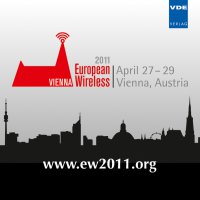Investigation on Cell Selection Methods Associated with Inter-cell Interference Coordination in Heterogeneous Networks for LTE-Advanced Downlink
Conference: European Wireless 2011 - Sustainable Wireless Technologies
04/27/2011 - 04/29/2011 at Vienna, Austria
Proceedings: European Wireless 2011
Pages: 6Language: englishTyp: PDF
Personal VDE Members are entitled to a 10% discount on this title
Authors:
Sangiamwong, Jaturong; Saito, Yuya; Miki, Nobuhiko; Abe, Tetsushi; Nagata, Satoshi; Okumura, Yukihiko (NTT DOCOMO, INC., 3-6 Hikari-no-oka, Yokosuka-shi, Kanagawa-ken 239-8536 Japan)
Abstract:
In LTE-Advanced, a heterogeneous network where femtocells and picocells overlaid onto macrocells is extensively discussed in addition to traditional well-planned macrocell deployment to improve further the system throughput. In heterogeneous network deployment, cell selection as well as intercell interference coordination (ICIC) is very important to improve the system and cell-edge throughput. Therefore, this paper investigates three cell selection methods associated with ICIC in heterogeneous networks in the LTE-Advanced downlink: signal-to-interference plus noise power ratio (SINR)-based cell selection, reference signal received power (RSRP)-based cell selection, and reference signal received quality (RSRQ)-based cell selection. Simulation results (4 pico eNodeBs and 25 set of user equipment are uniformly located within 1 macro eNodeB) assuming full buffer model show that the downlink cell and cell-edge user throughput levels of RSRP-based cell selection are degraded by approximately 3% and 10% compared to those of SINR-based cell selection under the condition of the maximizing the cell-edge user throughput due to the impairment of the interference level. Furthermore, it is shown that the downlink cell-edge user throughput of RSRQ-based cell selection is improved approximately 5%, although the cell throughput is degraded approximately 5% compared to that for SINR-based cell selection under the condition of the maximizing the cell-edge user throughput.


